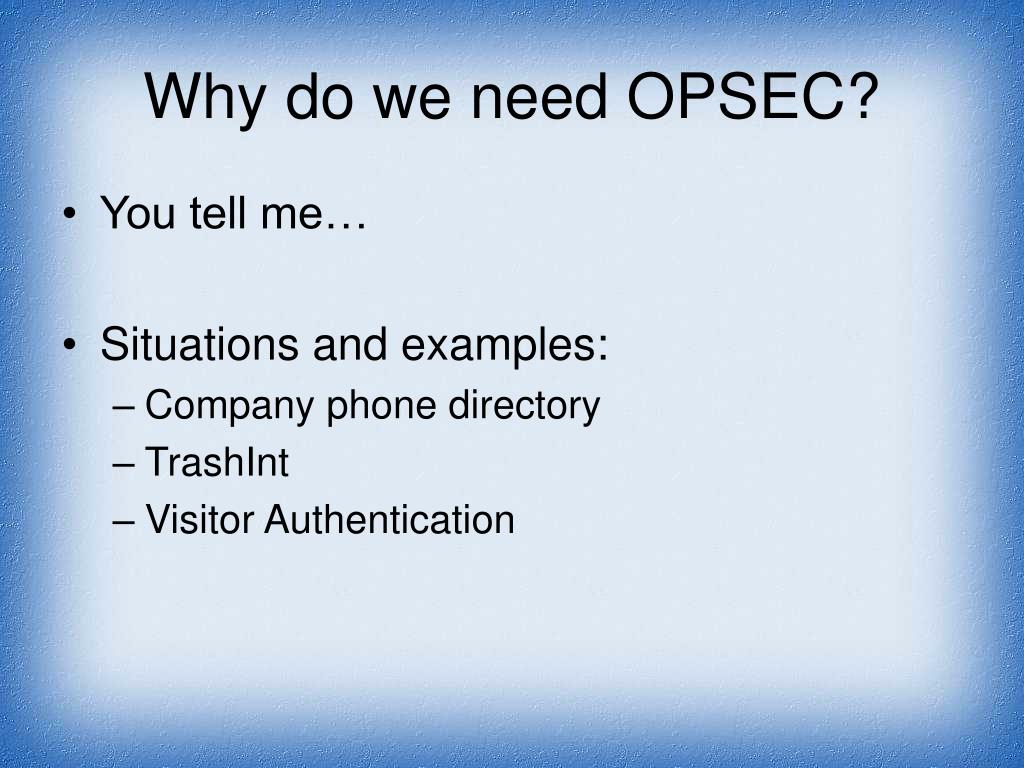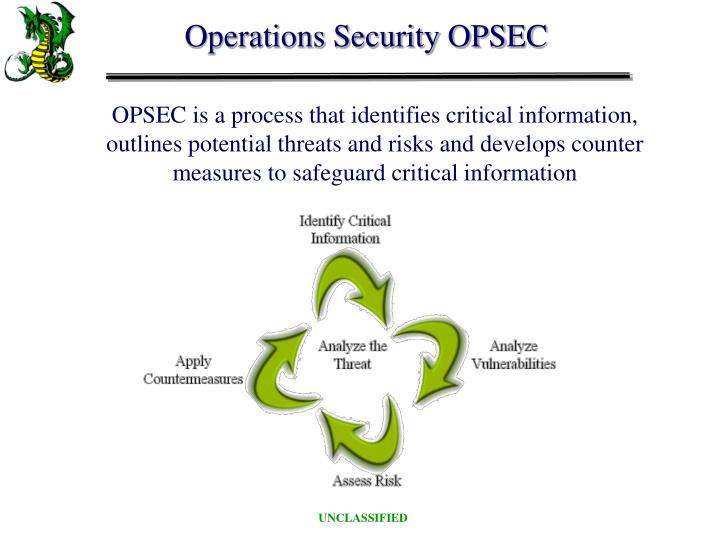

OPSEC as a capability of Information Operations Operations Security (OPSEC) defines Critical Information as: Identifying, controlling, and protecting unclassified information that is associated with specific military operations and activities. Prevent the adversary from detecting an indicator and from exploiting a vulnerability. The EUCOM Directors and EUCOM Component Commanders.It focuses the OPSEC process on protecting all unclassified information.The identification of critical information is a key part of the OPSEC process because: Monitoring of COMMAND SECURITY (COMSEC) processes and procedures.The Joint COMSEC Monitoring Activity provides OPSEC assistance by: Accomplish OPSEC annual refresher training and inform their OPSEC representative that training has been accomplish, therefore no further OPSEC training is required until the following year.Reduce the vulnerability of US and multinational forces from successful adversary exploitation of critical information.įriendly detectable actions and open-source information that can be interpreted or pieced together by an adversary to derive critical information.Īfter initial OPSEC training upon arrival to the command all personnel are required to: OPSEC?s most important characteristic is that: You need JavaScript enabled to view it.A process that is a systematic method used to identify, control, and protect critical information

Registrar: This email address is being protected from spambots.Stakeholders within the US government may reach out to This email address is being protected from spambots. Please Note: National Security Presidential Memorandum (NSPM) 28 is Unclassified but not approved for public release and therefore cannot be posted on this website. NCSC Memo – National Security Operations Security.Understanding OPSEC from an Organizational Perspective - Bulletin 4.Protecting Individuals by Practicing OPSEC - Bulletin 3.Understanding OPSEC - The OPSEC Cycle - Bulletin 2.January 2023 – National OPSEC Awareness Month



 0 kommentar(er)
0 kommentar(er)
